Some of my favorite species of tiny plants are mesembs. These tiny cuties are great collection items because of how little space they take up and how they mimic the textures and appearances of other textures and plants (Like Ox Tongue Gasteria, for example). The options for mesembs, or mimicry plants, are truly endless because of their variety.
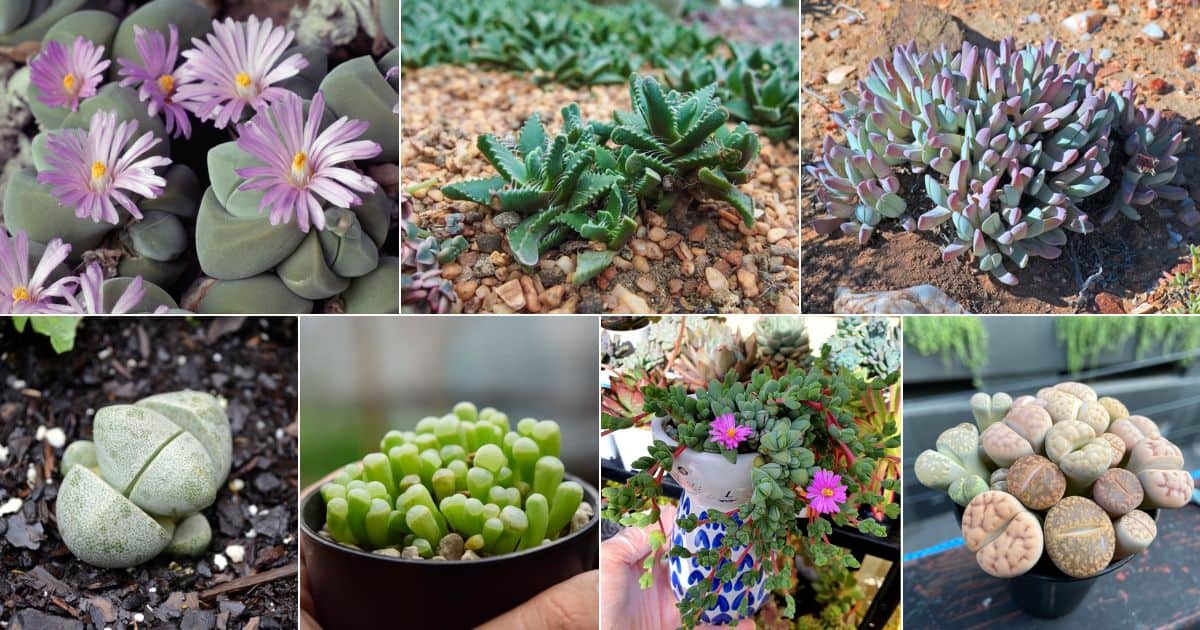
From Alionopsis to titanopsis and more, there are quite a few mesembs to look through. To help you find that unique addition to your succulent army, here are ten of my favorite mini mesembs as a part of the Mighty Mini series!
Jump to:
1. Lithops
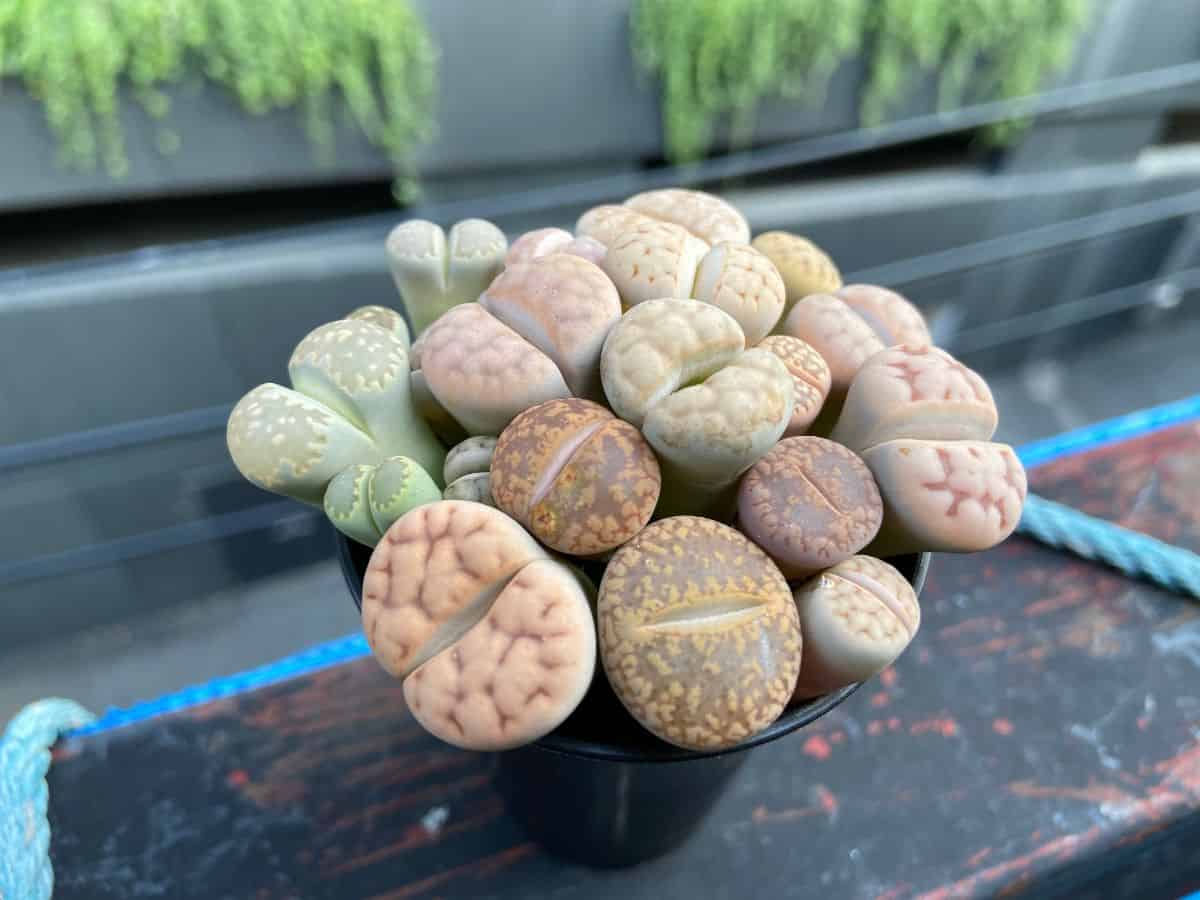
Buy it from:
One of the most common mimicry plants that you will see is a group called Living Stones. There are several species that belong to the Living Stone group, and some are from different genera and families entirely!
All living stones tend to do best when they are allowed to stay in a dry environment. For example, I keep mine close to a species that sucks up water like crazy. This gives my lithops the perfect environment! They do well in zones 10 - 11 and can get up to one inch high by three inches wide at the largest. Lithops are also extremely colorful in greens, purples, oranges, and reds, with flowers that dwarf the plant.
2. Pleiospilos nelii
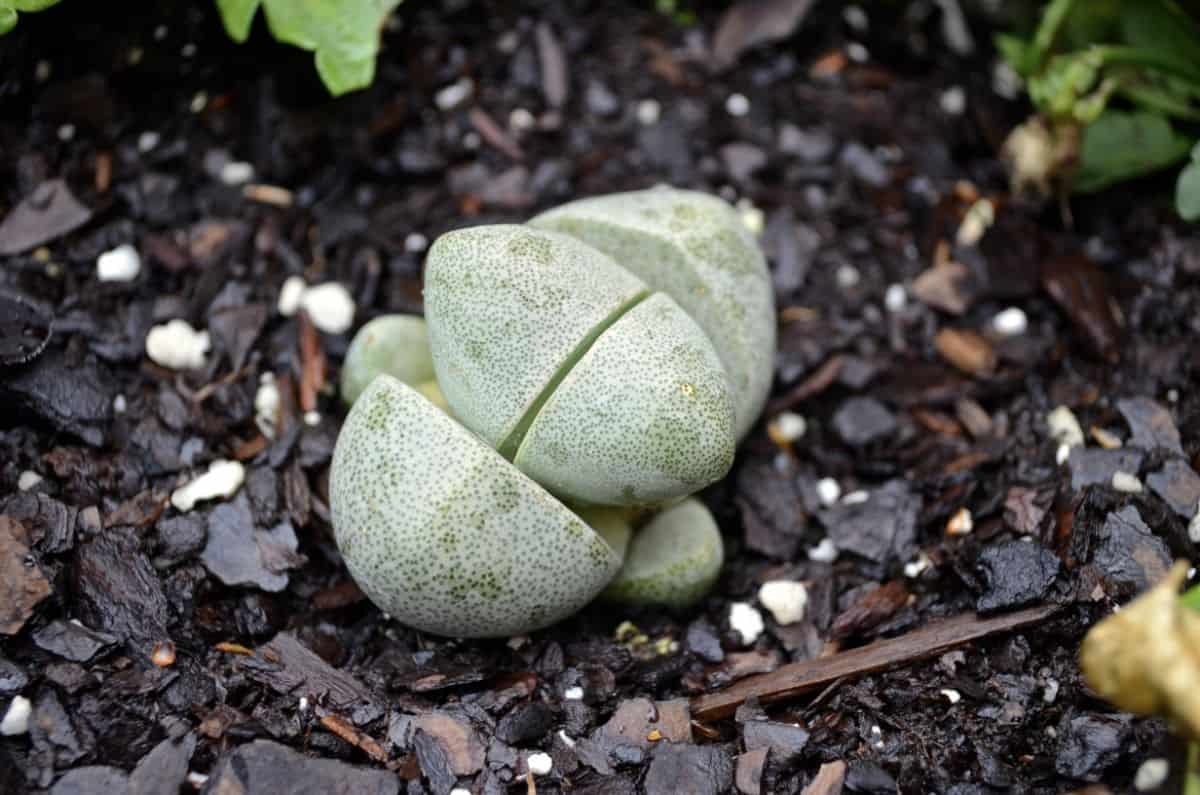
Buy it from:
With tall blooming stalks, P. nelii is a larger form of living stone. It is called split rock because the leaves press upward and split in alternating patterns, which makes it look like a rock was smoothly cut in half. Much like the lithops, they come in a variety of colors, but you’ll mostly find them in greens and reds.
Split Rocks do best with monthly watering in zones where freezes won’t happen. They can get up to five inches in diameter; however, this is rare and only found in older specimens. They are extremely slow growers, but they add bright-colored blooms to any surface.
3. Faucaria tigrina
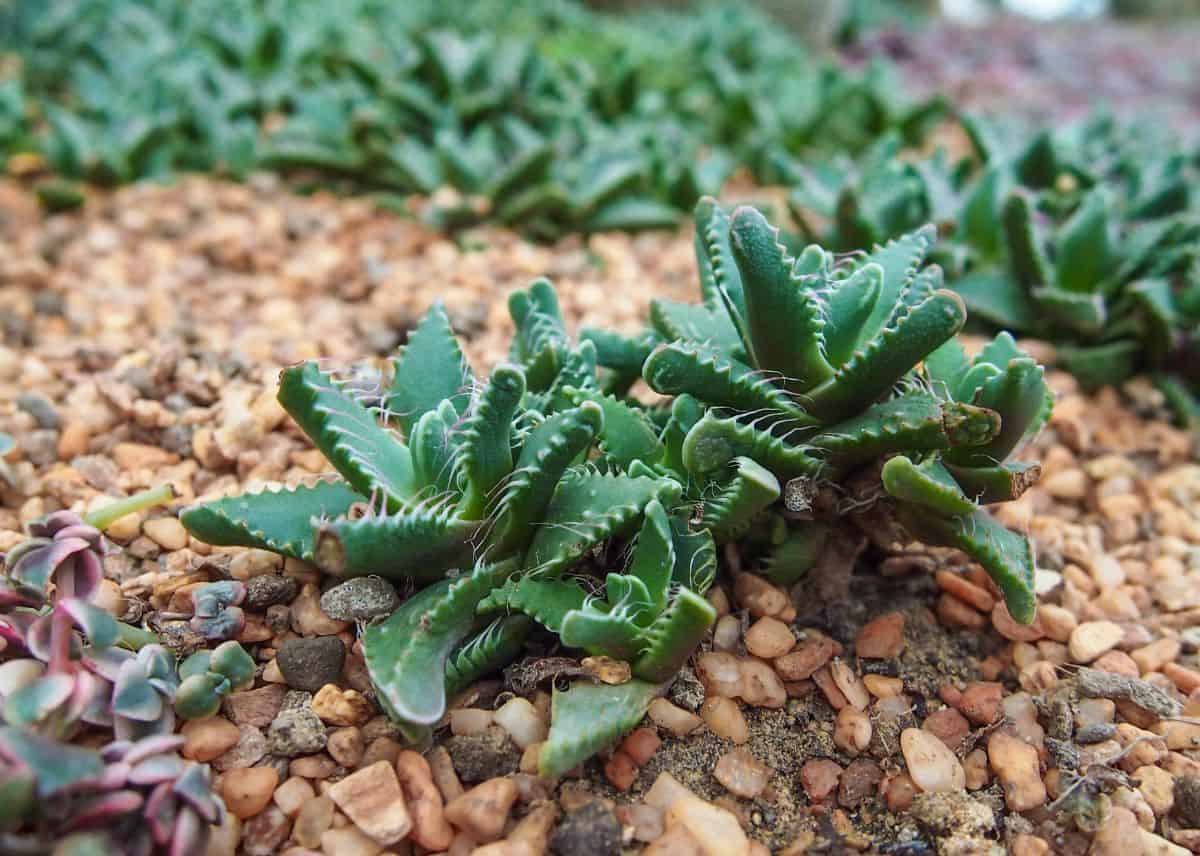
Buy it from:
Tiger jaws! These are some fun mesembs because they really do look like the wide-open mouth of a hungry tiger. The spines that go along the margins of the leaves start off thick but thin out like sharp teeth. Their flowers are bright yellow and daisy-like, but they can also come in a range of reds, pinks, and oranges.
Jaws enjoy full sun and hardiness zones nine and above. If you live somewhere that gets a freeze every now and then, put the fat plant in a container so you can bring it inside.
4. Titanopsis calcarea
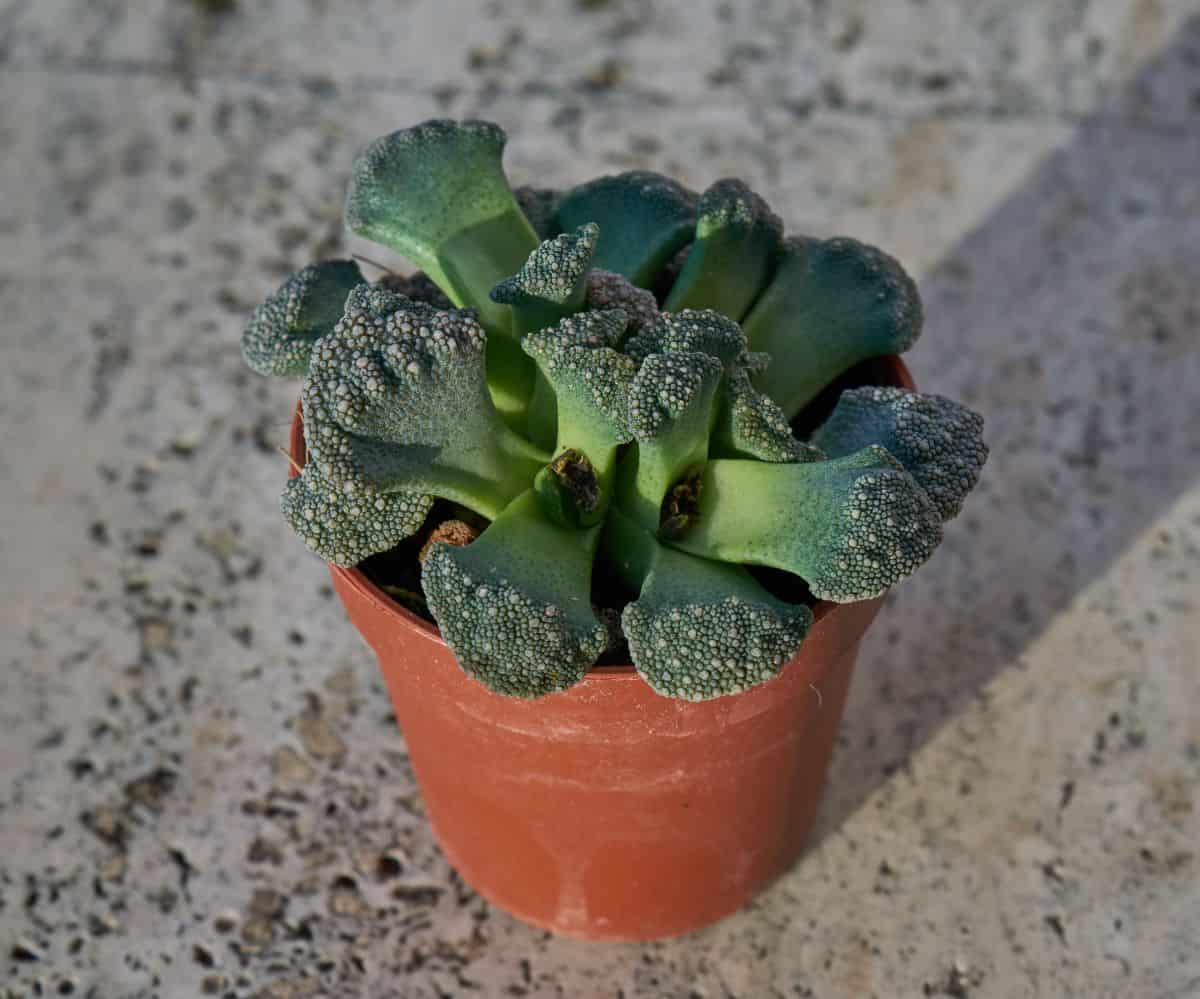
Buy it from:
The Concrete Plant is another textural wonder to add to any light-filled space. They need direct sunlight, though, and can’t tolerate freezes at all. Keep them in hardiness zones nine and above with a minimal watering schedule. It’s best to water when the leaves feel a little squishy.
Concrete Leaf or Plant is a multicolored beauty with hues of tan, grey, green, and pink like a granite concrete mix. Its unique texture makes it very treasured and also very rare. Fortunately, I have found them at local nurseries every now and then. You can spot them by their bumpy leaves and bright yellow flowers that nestle between the leaves.
5. Fenestraria rhopalophylla
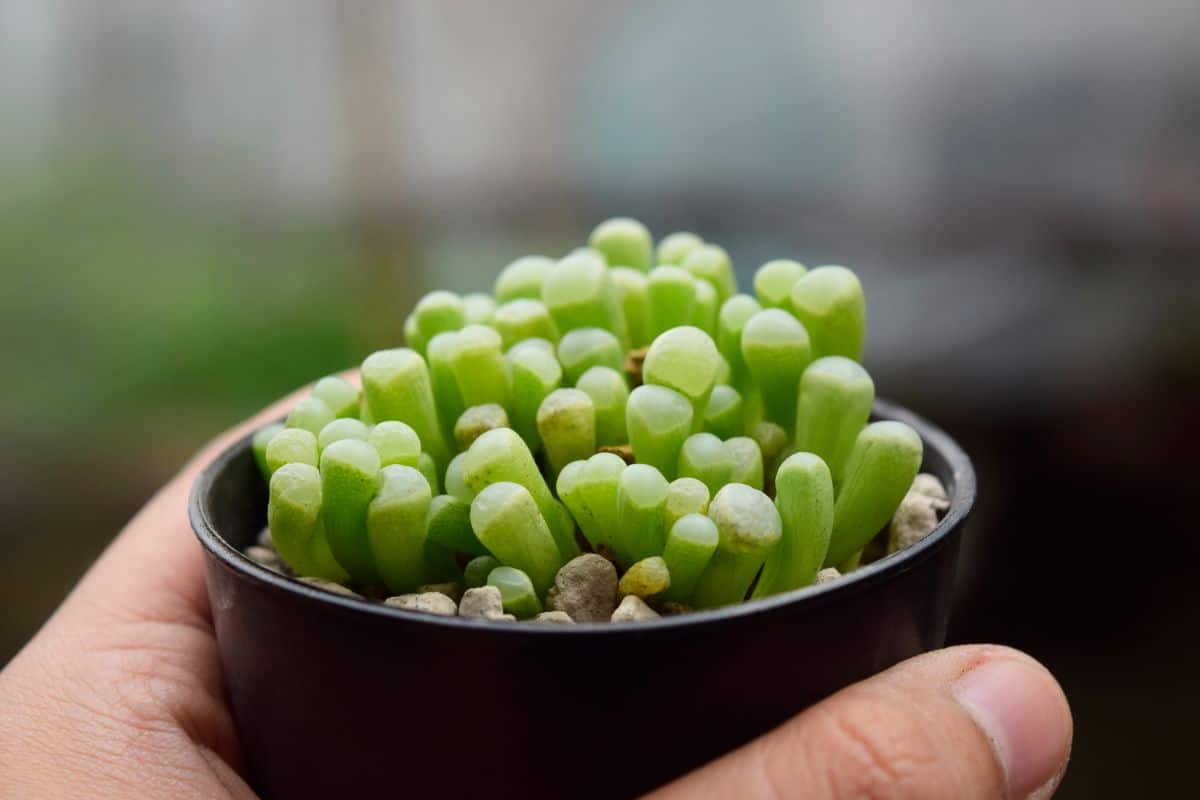
Buy it from:
Baby Toes is another one of those mesembs with a very interesting comparison. While the succulents do look like little toes or fingers, the name Window Plant is a bit more accurate, in my opinion.
Window Plants look much like fingers of land coral that have see-through portions at each tip. These windows let you see into the plant and also help sunlight reach the deepest parts of the plant. Because of this, they need the full indirect sun to protect their sensitive skin. Big white or yellow daisy-like flowers reach out during the blooming season as long as they are in hardiness zone 10 and above.
6. Glottiphyllum linguiforme
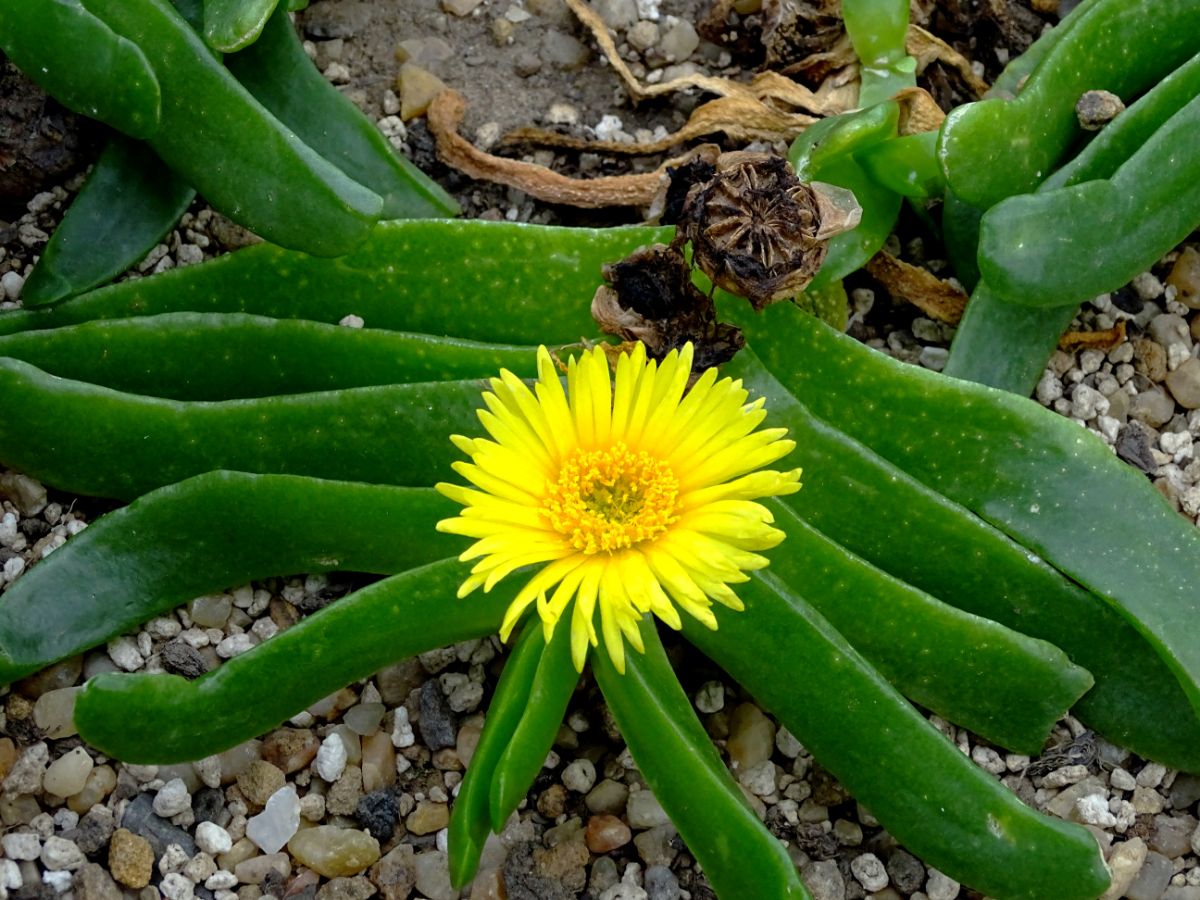
Buy it from:
One of the most interesting mesembs is from the genus glottiphyllum. This genus is home to several species that look like varying sizes of tongues sticking out from a tiny stem. They are a lot of fun to collect and have a few available variants.
G. linguiforme is very sensitive to freezes and does well only in zone 10. It needs regular watering like most succulents, and it blooms with bright yellow daisy-like flowers that stay close to the center of the plant. It is considered a nearly stemless plant with the potential for some reddish color that pops up during stressful conditions.
7. Cheiridopsis denticulata
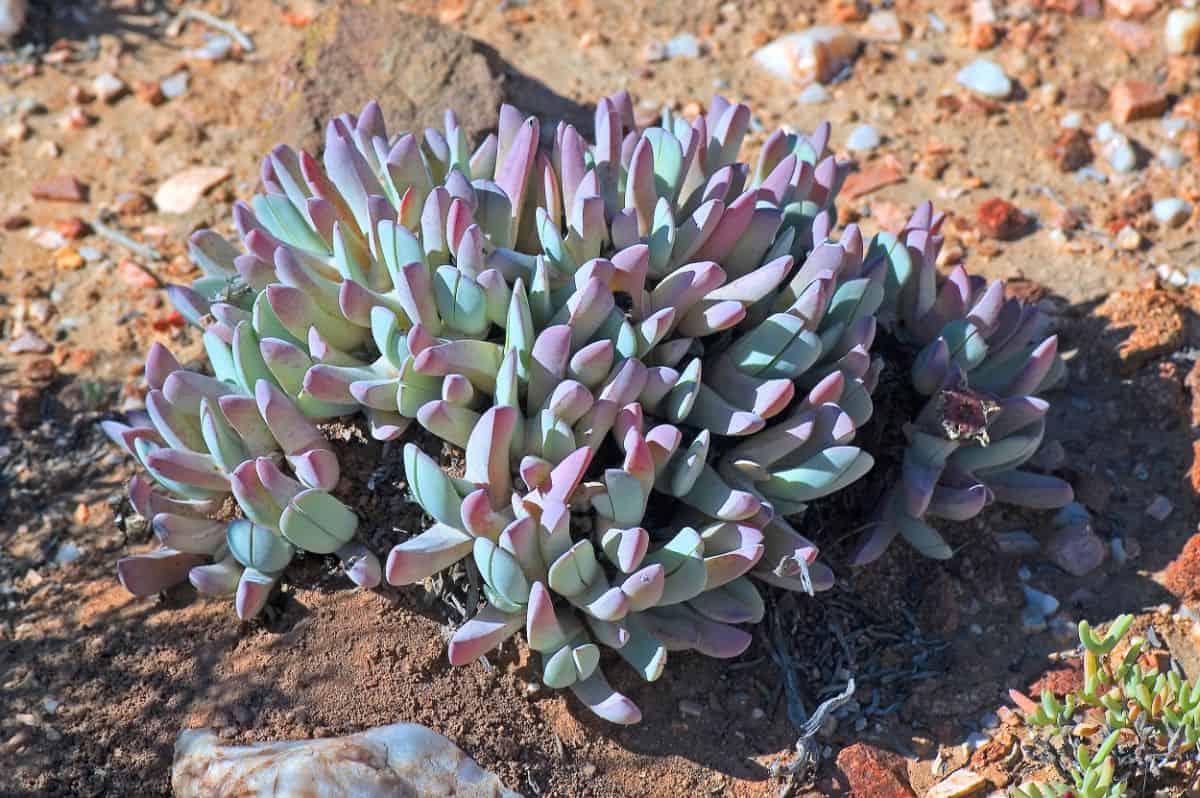
Buy it from:
Lobster Claws are such a fun succulent! They really do look like the smaller of a lobster’s two claws. The leaves grow in alternating directions, and the flowers are grand and white. This species is known to be a carpeting type of succulent that does well in zones nine and up.
One of the most striking elements of Carpet Weed, another name for Lobster Claws, is that the flowers can vary greatly, which contrasts beautifully against the light blue flesh of the thick leaves. Look for bright oranges, intense reds, and delicate whites from this species.
8. Braunsia maximiliani
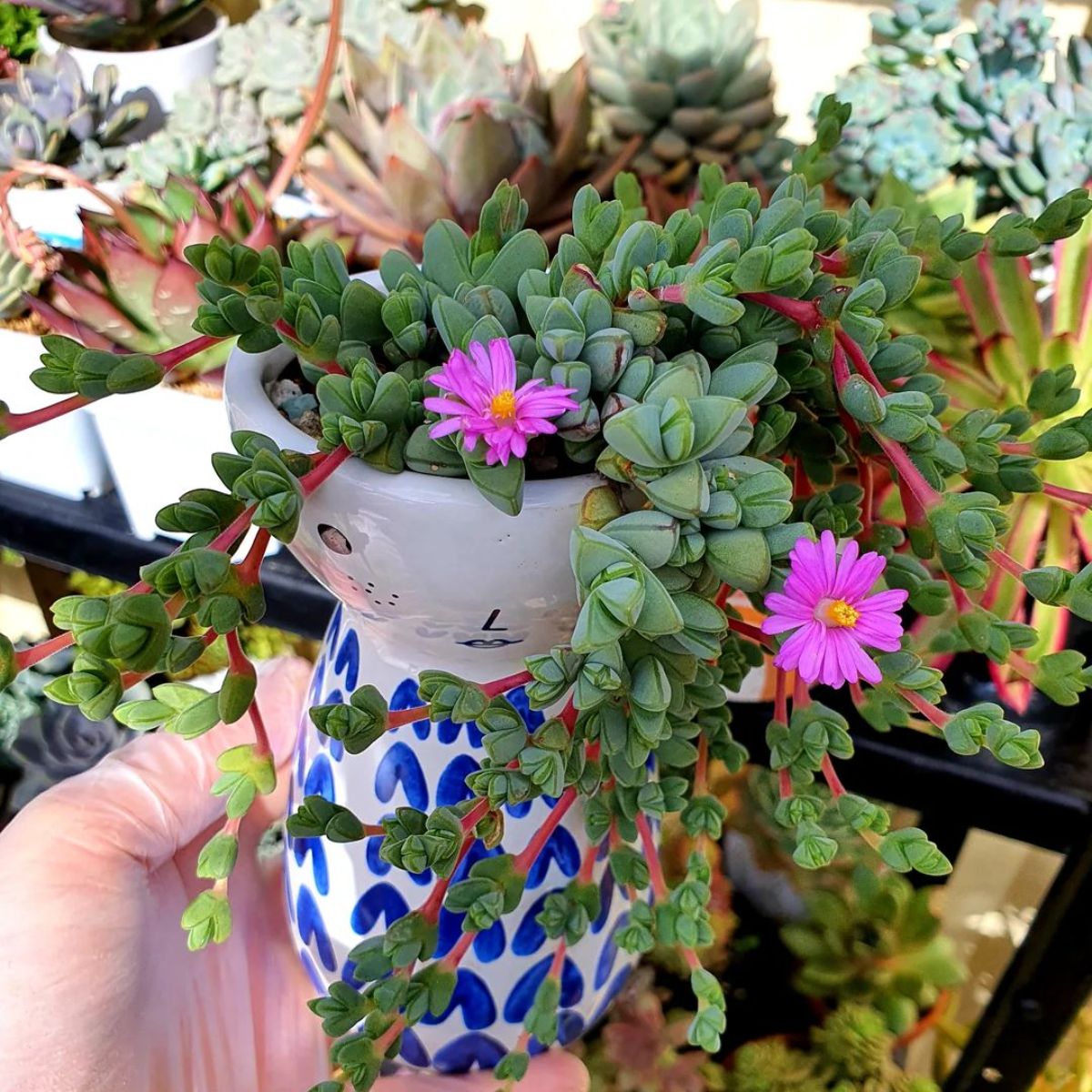
At one point, this species was known as Lampranthus maximiliani however, with the recent reorganization of various plants, Beads Lampranthus now belongs to the genus braunsia. The best way to describe this species is essentially a string of either a compact Karoo Rose or one of the many species of Split Rock mesembs.
The flowers are absolutely gorgeous with shades of violet, and they are also daisy-like. One of the best ways to use this species is to have them around the edge of a pot or in one because they grow in length rather than height! You can easily grow these in zone nine and up. Anything below that and the freeze will easily kill the plant.
9. Lapidaria margaretae
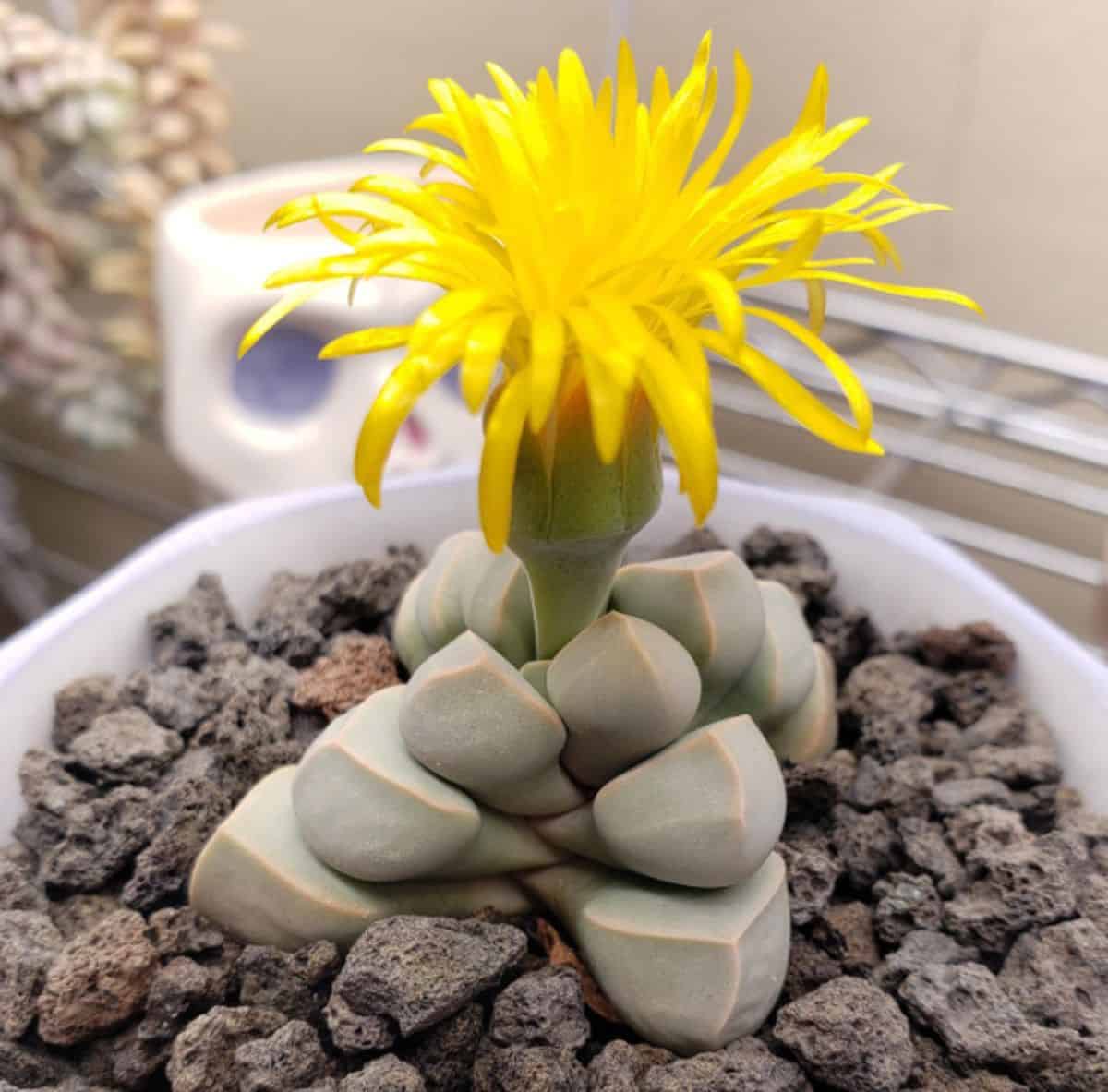
Buy it from:
The beautiful Karoo Rose is a mesemb that resembles a rose that is fully opening. The shape of each leaf is much like an angular rose petal, hence the name. It does best in the warmer areas of hardiness zone six and above, where the tiny leaves stay hardy and dormant during colder weather.
The flowers are bright yellow with golden undertones. The Karoo Rose is a light pink and very fleshy plant. At most, there are three sets of leaves at one time. They will grow into a mat-like appearance as well.
10. Gibbaeum dispar
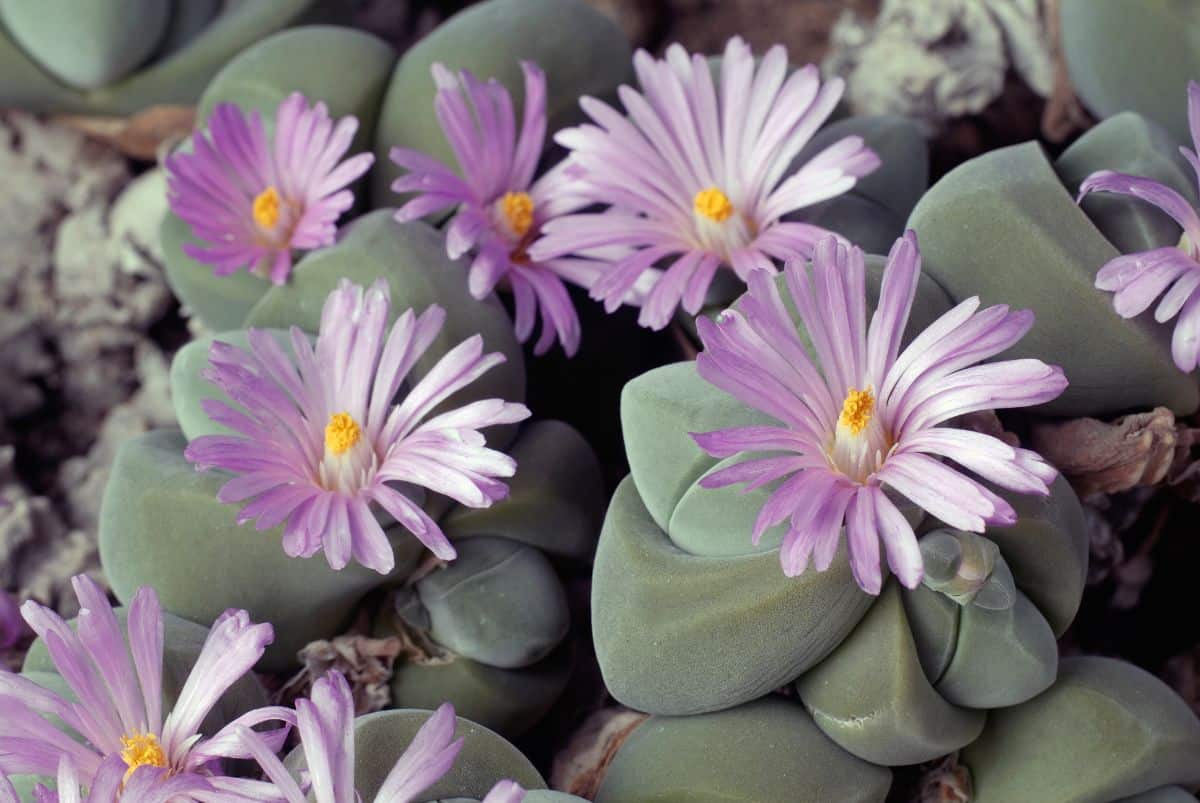
Buy it from:
If you are looking for something unique to add to your garden, then Ostrich Toes are for you. This genus only has four or five species that are circulated in the world of horticulture because the remaining species are part of the red list, where they are no longer allowed to be a part of common gardening.
The flowers are beautiful daisy-like blossoms that come in several different colors. One of the best ways to think about the G. dispar is like a beak. Many of the species have soft curves that lead to a beak-like shape. This shape only separates when new leaves are ready to grow.
Conclusion
Small plants are a great way to bring life into any space as long as you have enough light. Most mesembs are from South African deserts where they are used to mimicking the environment to avoid being eaten.
Use this list of small succulents in order to build arrangements that fit the space you have next time you go shopping. From the Karoo Rose to living stones, the collections and arrangements of these mighty minis are fun and daring!

